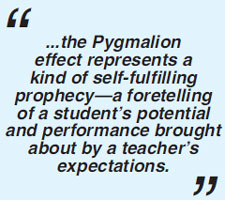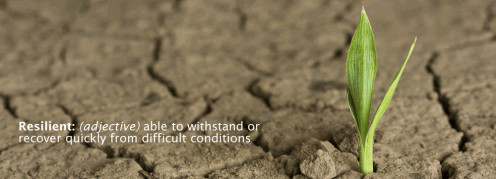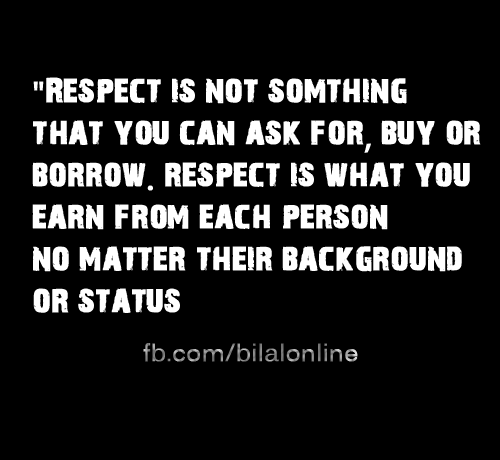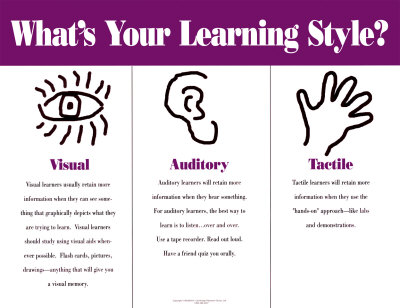Cookie Cutters Don't Work

by Amber Maccione
Today, schools focus too much on test scores and force teachers to teach to a test rather than focus on high quality learning that will lead students to be successful as adults. Teachers need to become aware of poverty among students by first putting aside their own biases and stereotypes and learning the needs of each student. The key to a student being able to move out of poverty is education. Teachers need to become the heroes by fostering resiliency, setting high expectations, cultivating different aspects of culture into their teaching, and using a diversified teaching approach that reaches more types of learners (McKinney). By doing so, teachers will more effectively bridge the gap between the wealthy and the poor.
My Experience
When I was a teacher, I butted heads a lot with the administration. The focus where I taught was the FCAT. From August until the day before the test was to be taken, teachers were required to teach towards the FCAT. There were teacher meetings I had to go to where teachers were required to bring ideas on how to teach towards the test. It was no longer talk about the Sunshine State Standards or the curriculum the district purchased to be used to teach the standards. And for the students that didn’t pass FCAT, they were placed in reading classes based on their score. For each different class level, there was a certain book. So the students knew who the low scorers were and who the high scorers were. The students would even ask, “Is the blue book for the dumb kids?” or “Why am I in this stupid kid class?” And in these meetings, the teachers would complain that students weren’t doing the work or continually doing poorly.
And the administration didn’t like my approach to handling the issue. I asked the students why they would score poorly and why they wouldn’t do the work. The responses were that they were bored, the class was stupid, continuing to act stupid would help them continue to get easy classes, they were tired of doing the same thing every year, etc. The gist of it was that they weren’t being challenged and everything was repetitive. Therefore, even though I was going against the grain, I decided to do what I knew best – challenge students by raising the bar on the expectations and teaching skills/standards rather than teaching towards a test. And the interesting thing was that my students rose to the bar and some even over it. And students wanted to be in my class because they knew I was there to see them succeed and learn rather than be a cookie cutter teacher doing what I was told.

Self-Fulfilling Prophecy
Research backs up my teaching method. When you focus on the student’s weaknesses, a child is going to feel dumb. When you focus on a student’s strengths, they feel that they are smart and can overcome their weaknesses. Remediation only waters down the material. Students pick up on that and feel dumb. Therefore, their attitudes reflect what we place in front of them. This is called collective socialization (McKinney). What collective socialization does is lead the students to be behavior problems in class, leave work undone or partially completed, Christmas-tree assignments and tests, skip classes or school altogether, etc. If students feel like they aren’t smart because of what schools and teachers are telling them by placing them in remediation, then the Pygmalion effect will happen – students will internalize the low expectation and their self-confidence, motivation, and academic success will erode (McKinney). By continually placing students according to test scores, you label them as gifted, smart, average, dumb, etc. That label fosters either high or low expectations. And a child is only going to live up to what they think you think of them. If you place a student in remediation then that student will think you think they are dumb. Therefore, they self-fulfill that prophecy by only doing what the label says they are (McKinney).
Overcoming Poverty
Remediation Isn't The Answer
When I was teaching these remediation classes, the majority of the students in these classes were minorities (African Americans/Black and Hispanics/ESOL). When you looked at the demographics of these students, most came from poverty, broken homes, and low-income/crime invested neighborhoods. As I taught these students, I would converse with them about their lives to better understand where their heads were at when it came to learning. One of my students was constantly absent for weeks at a time. And when he was there, he would sleep in class and rarely do his work. After talking to him and a counselor, I found out that he was the oldest out of three kids. His mother had no job. Every week they kept getting evicted because he couldn’t work and do school to help with all the bills. So he was absent a lot because he constantly had to pack his families belongings up and find them another place to live. He was sleeping in class because of his illegal activities at night trying to earn money for his family to survive. Putting him in remediation because he couldn’t pass a test wasn’t the right answer. Expelling him from school because he got arrested wasn’t the right answer. Being a cookie cutter teacher by following what the rules said needed to happen because of this student’s behavior and attendance problems wasn’t the answer. He needed more than just the skills to pass a test. Our schools fail these types of students because they live by middle class rules and understanding of life (Payne, 1996).
Poverty Among Students
43.2 million people live in poverty in the United States. One in four working households cannot afford housing. 46 million people in the United States suffer from food insecurity. One third of those people, suffer from chronic hunger (Beegle). When these students walk in a classroom, the last thing they are thinking about is how to pass a test. They are thinking about where their next meal will come from and where they will lay their head that night. Ruby Payne is a lady in the education world that exposed these hidden rules these different classes live by. Payne explained that there is the upper class, the middle class, and the lower class. Schools operate by middle class rules whereas those in poverty operate by lower class rules. The reason why schools are failing students in poverty is because they refuse to understand the life rules that these students operate in. The middle class operate in regards to work, achievement, and material security (Payne, 2008). The lower class operate in regards to survival, relationships, and entertainment (Payne, 2008). If a student is struggling with basic needs (survival), how do you expect them to succeed in academics? And if teachers don’t build trusting and supportive relationships with these students (relationships), the students will see no need to go above the low expectations within a remediation class. 42% of those born into poverty stay there. Only 6% ever make it out and rise to the top (Payne, 2008). Education is the key to giving students choices (Payne, 2008). Therefore, the rules teachers teach by need to change in order to reach these students in poverty.
The Answer
McKinney defines at-risk students/students in poverty as:
When they experience a significant mismatch between their circumstances
and needs, and the capacity or willingness of the school to accept, accommodate,
and respond to them in a manner that supports and enables their maximum social,
emotional, and intellectual growth and development (McKinney).
What she says is the answer is:
Teachers need to understand resiliency, support behaviors that
demonstrate high expectations, consider social dynamics, and use diverse
teaching methods (McKinney).

Resiliency
The first thing is resiliency. Teachers need to model it (McKinney). Students in poverty live day to day. They don’t know what tomorrow will bring or even if there will be a tomorrow. Teachers need to show a student how to push on and fight for a goal. For example, I had a student that had only been in the United States a few months. He was from Cuba and barely spoke or read any English. One of the assignments for him was to summarize the short story he had just read. He got frustrated with me saying it was too hard for him and for me to expect him to do this was crazy. Therefore, I sat down next to him and wrote in Spanish. I don’t speak Spanish, read Spanish, or even understand it that well. I took some Spanish classes in high school and even some in college, but I could barely say that I could even speak it a little bit. I struggled with writing one sentence. But I did it with some mistakes. The student corrected them for me. After he saw me try in his language, he tried the assignment in my language. By the end of his second year in my class, he was reading three or four stories and answering a topic question based on all those stories. The question had to be answered in essay format. He was writing three paragraphs for his essay. His English was broken, but I could still get the gist of what he was explaining. Resiliency is about not giving up. When a student knows you are there to support them and guide them even though expectations seem out of reach for them, the student will push themselves to meet those expectations because they know you are there to support them (McKinney).

High Expectations
Expectations are important. Remediation fosters labeling, which fosters low expectations, which fosters lack of self-confidence, lack of motivation, and lack of academic success (McKinney). Cookie cutter teachers get frustrated when students don’t perform the way they think they should. They blame the student, rather than the rules and system that they have been told to teach by. The teachers give up and accept the failure. The cookie cutter teacher never thinks that it is them that is the cause of the problem (McKinney). Teachers need to raise the expectations and not take no as an answer. For example, I had a student that never did any work. And this was the case in every one of her classes. Her counselor told me that she was a difficult one and to just not put any time and energy into her because I was never going to get anywhere with her. I knew that would never help this student succeed. At first, I tired to sit with her and help her. But I only got cussed at. So I took a different approach; I tried to create a positive report with her before trying to get her to complete assignments. Every day, I would great her with a smile and a “How are you?” I would also let her know that I was there to help her if she needed me as I gave her her assignments. Then I would go about teaching the class and working one on one with other students. Eventually, she started doing her assignments and completing them because she saw that I cared and wasn’t going to just ignore her or just assume she wasn’t going to do the assignment.

Social Dynamics
A constant phrase among students in poverty while I was teaching was, “I’m not going to respect you unless you respect me.” Therefore, the only rule I had in my classroom was to respect everyone. The social dynamics of a classroom make all the difference in reaching students in poverty. Students in poverty have issues when it comes to trusting adults, interacting with others, and taking orders (McKinney). It is very important that the teacher shows the student they can trust them. The first step to that is respect. Many of my students hated working in groups and didn’t like me telling them they had to do something. The first few weeks of school, I built report among the students and I by doing relationship building games. That way the students let their guard down and became a family. They accepted the groups after that and it helped them demonstrate their strengths as they helped others with their weaknesses. I also gave my students choices. I would explain the skill I wanted them to develop and then had different activities that they could choose from to help them build that skill. That way they felt they had more control yet I was still able to help them achieve success.

Diverse Learning
By giving my students choices, I not only addressed different learning styles and the issue of them not liking being told what to do, I also created a diverse learning environment. Students need to feel like they have a role in their learning and also like learning to be relevant. Teaching needs to be done around the students’ needs and interests (McKinney). Cookie cutter teaching doesn’t do that. Each classroom should look and sound different from the next even if the same teacher is teaching those classes or even if the subject and curriculum of those classes is the same. Teaching should encourage dialogue between teacher and students and students and students (McKinney). That is why groups and teacher one on ones are important. And teaching should be active and problem based through the reading material in the curriculum (McKinney). That is why teaching should not be based on a test.
Stop Being a Cookie Cutter
Ruby Payne says if a student cannot plan, he cannot predict. If he cannot predict, then he cannot identify the cause and effect of actions. If he cannot identify the cause and effect, he cannot identify the consequences of his actions. If he cannot identify the consequences, he cannot control impulsivity. If he cannot control impulsivity, he has the inclination to crime (Payne, 2006). 75% of high school dropouts fill our state prisons. 59% of them fill our federal prisons (McKinney). The lower class dropout rate is 10%, the middle class is 5.2%, and the upper class is 1.6%. We are not doing what is effective to reach our poverty students; and therefore, things need to change. Effective teachers have knowledge of the different types of students they teach, have multiple viewpoints and a pluralistic ideology so they can reach every student, have persistence, and make every student feel needed (McKinney).
Putting students in remediation doesn’t help because the students feel that they are dumb and therefore stop trying. The bar needs to be placed and all students expected to reach it. And it is the teacher’ job to differentiate his/her teaching so that each student can reach that bar – peer groups, teach one-on-one sessions, modeling, etc. Every student can learn. Therefore, teachers need to stop being cookie cutters and teach to meet every student where that student is at.
Resources
Beegle, D. M. (n.d.) Educating students who live in Poverty. Connecting People:
Communication Across Barriers. Retrieved from
http://www2.ed.gov/programs/slcp/2012thematicmtg/studentpovty.pdf
McKinney, S. E., Flenner, C., Frazier, W., & Abrams, L. (n.d.). Responding to the needs
of at-risk students in poverty. Retrieved from
http://www.usca.edu/essays/vol172006/mckinney.pdf
Payne, R. (1996, March). Understanding and working with students and adults from
poverty. Instructional Leader, 9 (2). Texas Elementary Principals and
Supervisors Association. Retrieved from
https://www.michigan.gov/documents/mde/Understanding_and_Working_with_Students_and_Adults_from_Poverty_360998_7.pdf
Payne, R. (2008). A Framework for Understanding Poverty. Highlands, Texas: aha!
Process, Inc. Retrieved from
http://www.ahaprocess.com/store/more/excerpts/workbook_Framework.pdf
Payne, R. (2008, April). Nine Powerful Practices. Educational Leadership, 65 (7), 48-52.
Retrieved from http://www.ascd.org/publications/educational-leadership/apr08/vol65/num07/Nine-Powerful-Practices.aspx
Copyright © 2013 http://ambercita04.hubpages.com/ All Rights Reserved








